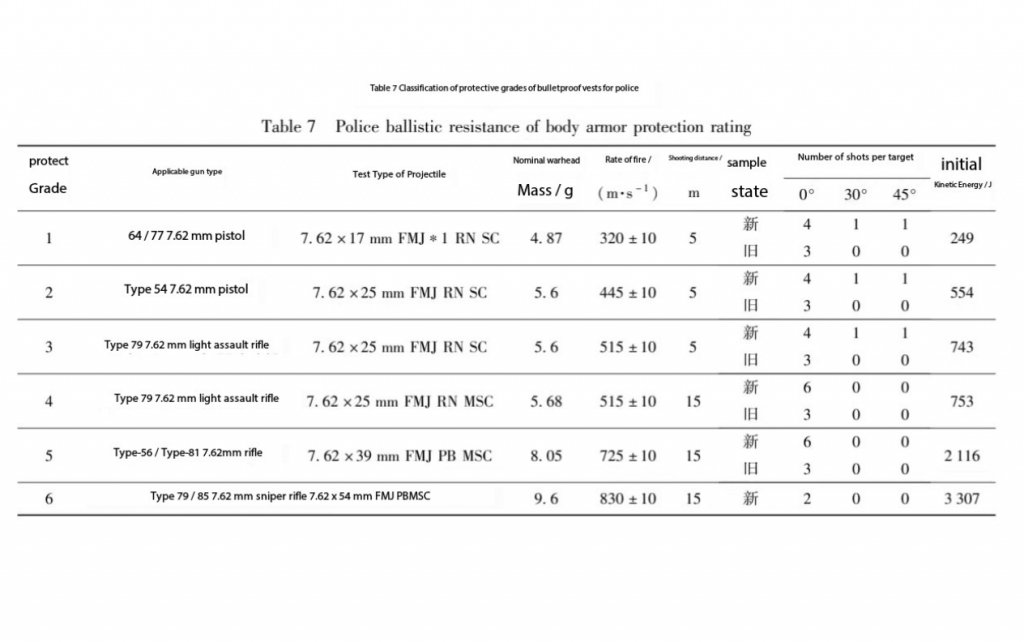Address
304 North Cardinal St.
Dorchester Center, MA 02124
Work Hours
Monday to Friday: 7AM - 7PM
Weekend: 10AM - 5PM
Address
304 North Cardinal St.
Dorchester Center, MA 02124
Work Hours
Monday to Friday: 7AM - 7PM
Weekend: 10AM - 5PM

When it comes to bulletproof standards, the United States and China have distinct protocols that manufacturers must adhere to, ensuring optimal protection and performance of their products. For companies like ours, understanding these standards is crucial for producing top-quality bulletproof gear.
In the United States, the National Institute of Justice (NIJ) sets the benchmarks for ballistic resistance. The NIJ Standard-0101.06 is the most widely recognized, outlining six protection levels:

NIJ standards are rigorous, requiring extensive testing against various bullet types, velocities, and impact conditions to ensure comprehensive protection.
China’s bulletproof standards are governed by the Ministry of Public Security (MPS). The key standards include:

Chinese standards focus on realistic combat scenarios, emphasizing practical usability and comfort alongside protection.
HG2 =NIJ IIIA
RF1 =NIJ III
RF2 =NII III+
RF3 =NIJ IV
For manufacturers like us, aligning with both NIJ and Chinese MPS standards means producing versatile and reliable bulletproof products suitable for diverse markets. Understanding these standards ensures our products meet the highest protection criteria, enhancing safety for users worldwide.
By integrating these standards into our design and manufacturing processes, we can deliver high-performance bulletproof gear that meets the rigorous demands of both the U.S. and Chinese markets.
Navigating the complexities of bulletproof standards in the U.S. and China is essential for producing effective and reliable protection gear. At HONOR BEES POLICE EQUIPMENT, we are committed to adhering to these stringent standards, ensuring our products provide maximum safety and comfort for our users.